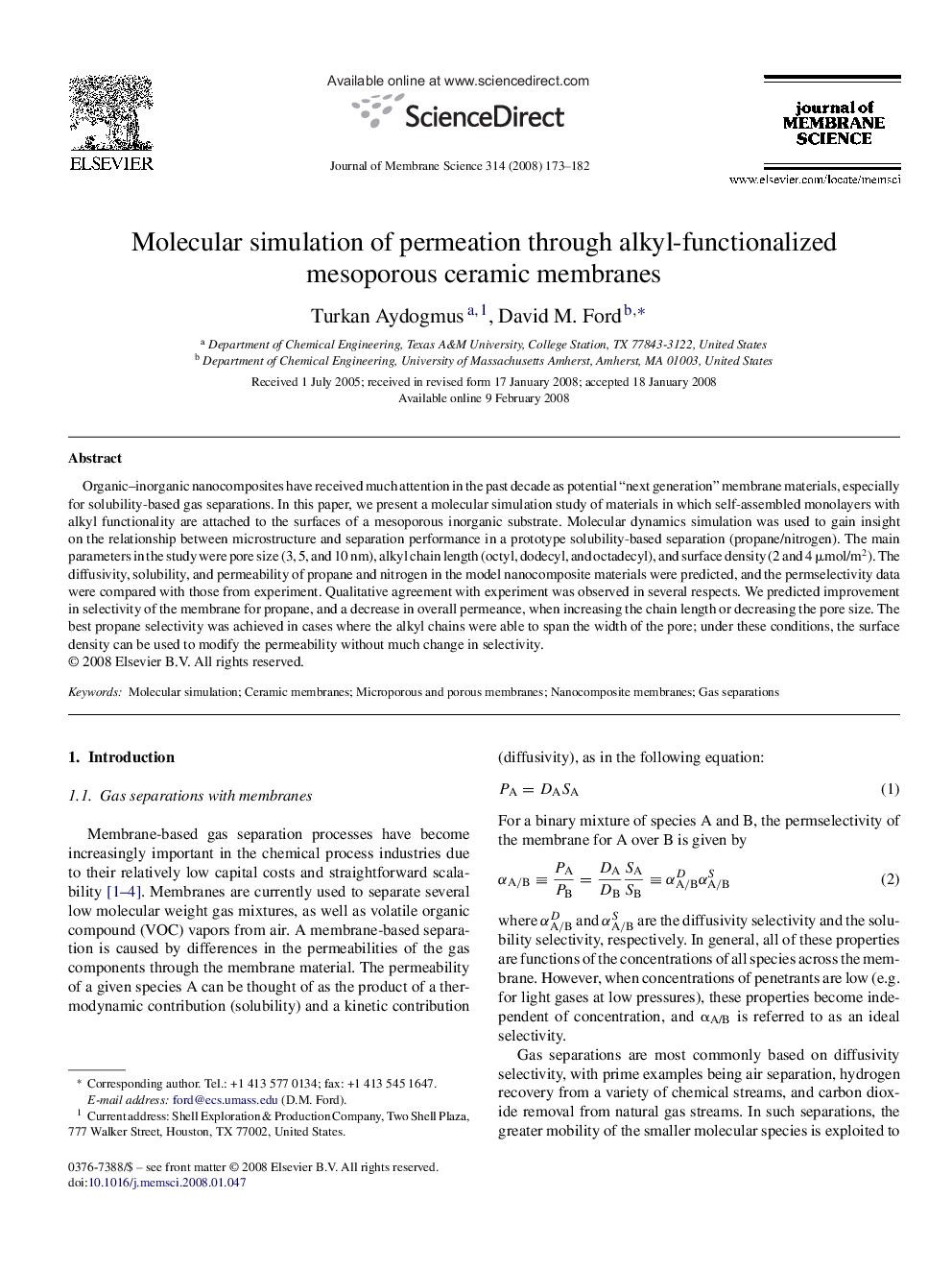| Article ID | Journal | Published Year | Pages | File Type |
|---|---|---|---|---|
| 638172 | Journal of Membrane Science | 2008 | 10 Pages |
Organic–inorganic nanocomposites have received much attention in the past decade as potential “next generation” membrane materials, especially for solubility-based gas separations. In this paper, we present a molecular simulation study of materials in which self-assembled monolayers with alkyl functionality are attached to the surfaces of a mesoporous inorganic substrate. Molecular dynamics simulation was used to gain insight on the relationship between microstructure and separation performance in a prototype solubility-based separation (propane/nitrogen). The main parameters in the study were pore size (3, 5, and 10 nm), alkyl chain length (octyl, dodecyl, and octadecyl), and surface density (2 and 4 μmol/m2). The diffusivity, solubility, and permeability of propane and nitrogen in the model nanocomposite materials were predicted, and the permselectivity data were compared with those from experiment. Qualitative agreement with experiment was observed in several respects. We predicted improvement in selectivity of the membrane for propane, and a decrease in overall permeance, when increasing the chain length or decreasing the pore size. The best propane selectivity was achieved in cases where the alkyl chains were able to span the width of the pore; under these conditions, the surface density can be used to modify the permeability without much change in selectivity.
